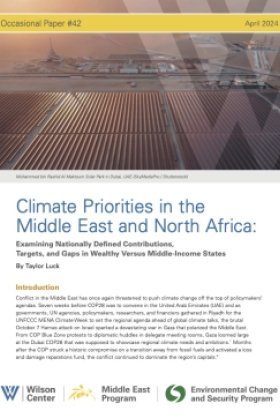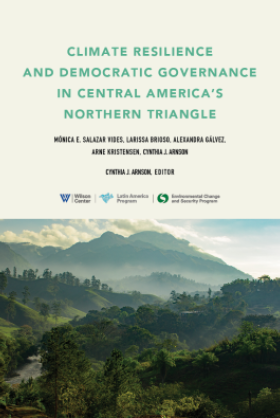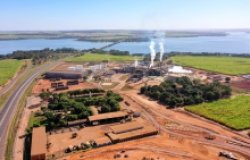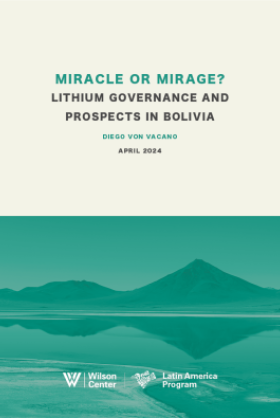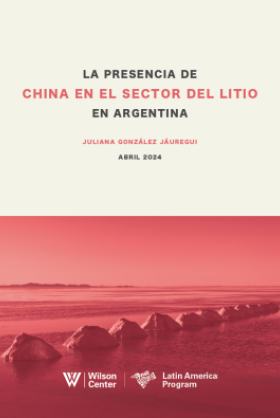172. Banking On The Environment In Central and Eastern Europe
How effectively have multilateral development banks (MDBs) addressed environmental issues in Central and Eastern Europe? The World Bank, European Bank for Reconstruction and Development (EBRD), and European Investment Bank (EIB) are among the major donors to the region, providing more than $25 billion in loans, which usually attract additional private sector, and bilateral and recipient government financing as well. All three banks have been struggling in recent years to respond to pressure to better address environmental issues in their global and regional work, while often facing criticism by non-governmental organizations (NGOs) for doing a poor job in translating ideas and policies into action.
Environmental aid has also been a donor priority in this region for several reasons: to help address the enormous environmental degradation, to assist in policy reform efforts and, more recently, to help countries aspiring to join the European Union (EU) tackle the tremendous costs of bringing their environmental standards up to European norms. The European Commission estimates this effort has the daunting price tag of $130 billion.
Although the World Bank, EBRD, and EIB share the same basic environmental objectives--seeking to fund projects with major environmental components or goals and acting to mitigate potentially adverse environmental consequences in their broader project portfolios--there is significant variation in how they have pursued these goals in Central and Eastern Europe. This essay provides a snapshot of the strategies of the three banks, focusing on their "greenest" activities: projects with primary environmental goals or significant environmental components.
The World Bank has played an important role in providing policy support for environmental reform in the region, while financing the greatest scope of "green" projects of the three banks. The EIB, by contrast, has responded to its environmental goals in relatively minimal ways, and the EBRD maintains an intermediate position between the other two. This is an interesting finding, since on the global scene many NGOs are critical of the World Bank's environmental activities, whereas environmentalists have only recently begun to scrutinize the EIB.
In the period 1991-96, the World Bank financed $1.2 billion in environmental projects in Central and Eastern Europe, comprising around 12 percent of its total portfolio of $10 billion. This compares with $808 million for the EBRD (out of a portfolio of $7.3 billion) and $406 million for the EIB (out of a total of $6 billion). The World Bank's "green" projects tend to emphasize energy efficiency activities, the improvement of waste water collection and treatment, and drinking water quality. It is also involved in sustainable forestry and environmental management, and capacity building. In addition, through its role as the main implementing agency of the Global Environmental Facility (which was created to provide grants to help countries address global environmental problems), the World Bank takes part in an additional $67 million in projects in areas such as the phase-out of ozone-depleting substances and bio-diversity conservation.
Outside of its project loans, the World Bank has played an important role in providing intellectual and policy support for environmental reform in the region. For example, it is a leader in the Environmental Action Programme for Central and Eastern Europe (EAP), which contains a set of guidelines, principles, and priority areas for environmental management in the region. Of the three banks, it is most active in trying to influence recipient countries to agree to environmentally-oriented projects, to add environmental components into projects, and to help influence policy changes. Its projects have the most environmental conditionality as well.
The EIB is the European Union's long-term lending institution, but in fact it is a global actor, and has been authorized to lend a total of 7.7 billion ECU to countries in Central and Eastern Europe between 1989-2000. Its latest environmental policy statement says financing environmental projects is "a major activity of the Bank." To date, however, out of its 96 financed projects in the region, only six have been "green." Almost 60 percent of the total amount lent for these six projects is accounted for by just one, an energy initiative in the Czech Republic, which involved the purchase of expensive de-sulphurization equipment for six power plants in the polluted area of northern Bohemia. Of its other "green" projects, four were co-financed with one of the other two banks, where either the World Bank or EBRD took the lead on project design. These initiatives include a sewerage and water supply project in Riga, district heating rehabilitation in Estonia, a forestry project in Poland, and an energy project in Bulgaria. Generally, the EIB has taken few steps to pursue "green" projects on its own, and has done very little in the area of non-project environmental activities. In addition, although the EIB follows EU environmental impact assessment procedures in its work in Central and Eastern Europe, it is sometimes difficult to apply European Environmental Impact Assessment procedures outside the EU, where compliance and enforcement may be weak.
The London-based EBRD was set up in 1991 to help promote open, market economies and private sector development specifically in Central and Eastern Europe and in the former Soviet Union. It stated in its first environmental policy document that it intended to place "environmental issues at the forefront of its efforts to promote sustainable growth" in the region, and to play a "leadership role in the environmental recovery of the region." To date, the bulk of its activities focus on credit facilities for energy efficiency projects, and waste water and water treatment projects, although it has also financed other "green" projects in the energy and transport sectors as well. EBRD has also been involved in a handful of policy-related activities, including (with the World Bank) the Project Preparation Facility set up under the EAP, which acts as a matchmaker among a network of bilateral and multilateral donors for projects that support the EAP's goals. Overall, the EBRD's environmental work lacks the depth and scope of the World Bank's, but goes well beyond the activities undertaken by the EIB.
What accounts for the different ways the banks have sought to address environmental issues? Two factors are particularly important: shareholder politics and how "bank-like" each entity is designed to act. In terms of shareholder politics, external pressure from major shareholder countries (usually supported or pushed by environmental NGOs) has been a key factor in determining the depth of each MDB's commitment to addressing environmental issues. There has been much stronger pressure from shareholders at the World Bank and EBRD (with the US often taking the lead) relative to the EIB (whose shareholders are EU member states and the European Commission). Yet, even where major shareholders have expressed a desire for an MDB to address environmental issues, institutional design and incentives systems play critical roles in determining how these ideas are translated into activities.
A key factor determining how this translation process works is the extent to which the MDB is designed to emphasize its character as a financial institution versus its character as a development agency. "Bank-like" MDBs are more driven by client demands and contain fewer incentives for staff to place projects within broader policy goals (such as the environment). This is the case of the EIB, and to a lesser extent of the EBRD, with its private-sector emphasis. A relatively less "bank-like" MDB, such as the World Bank, is more conscious of its role to promote environmental policy goals. It also faces a greater struggle, however, in selling its projects to recipient countries that have access to alternative sources of financing with fewer non-financial policy conditionality strings attached.
All three banks have faced challenges in implementing their "green" projects in Central and Eastern Europe, and some EBRD and EIB projects in particular have also been criticized by NGOs for inadequately addressing environmental issues. One example are the "green" waste water and water treatment projects undertaken by all three banks, which were designed mainly to address "hot spots" identified for clean-up under the 1992 Joint Comprehensive Environmental Action Programme for the Baltic Sea. These have struggled with the political difficulties many municipalities face in increasing tariffs to the rates called for in project documents. The MDB-financed water utilities have also faced sharper than expected declines in water demand, which further reduce expected revenues that can be collected from tariffs. On the other hand, individual "green" projects funded by each bank have met with a variety of delays, particularly in countries where governments change rapidly. Environmentalists have also been critical of the inability of the EBRD's Nuclear Safety Account to produce the closure of any high risk nuclear reactors in the region and the EIB's penchant for building new roads and highways versus rehabilitating and maintaining old roads or placing more emphasis on public transport.
The MDBs' ability to integrate their environmental goals with their activities in promoting economic restructuring in Central and Eastern Europe will remain important in the region, particularly for pre-accession countries. The differences in their activities in the region highlight some of the challenges international financial institutions must confront in pursuing sometimes optimistic policy goals.
Dr. Gunter spoke at an EES Noon Discussion on December 8, 1998.
About the Author
Tamar Gunter
Read More
Global Europe Program
The Global Europe Program is focused on Europe’s capabilities, and how it engages on critical global issues. We investigate European approaches to critical global issues. We examine Europe’s relations with Russia and Eurasia, China and the Indo-Pacific, the Middle East and Africa. Our initiatives include “Ukraine in Europe” – an examination of what it will take to make Ukraine’s European future a reality. But we also examine the role of NATO, the European Union and the OSCE, Europe’s energy security, transatlantic trade disputes, and challenges to democracy. The Global Europe Program’s staff, scholars-in-residence, and Global Fellows participate in seminars, policy study groups, and international conferences to provide analytical recommendations to policy makers and the media. Read more
